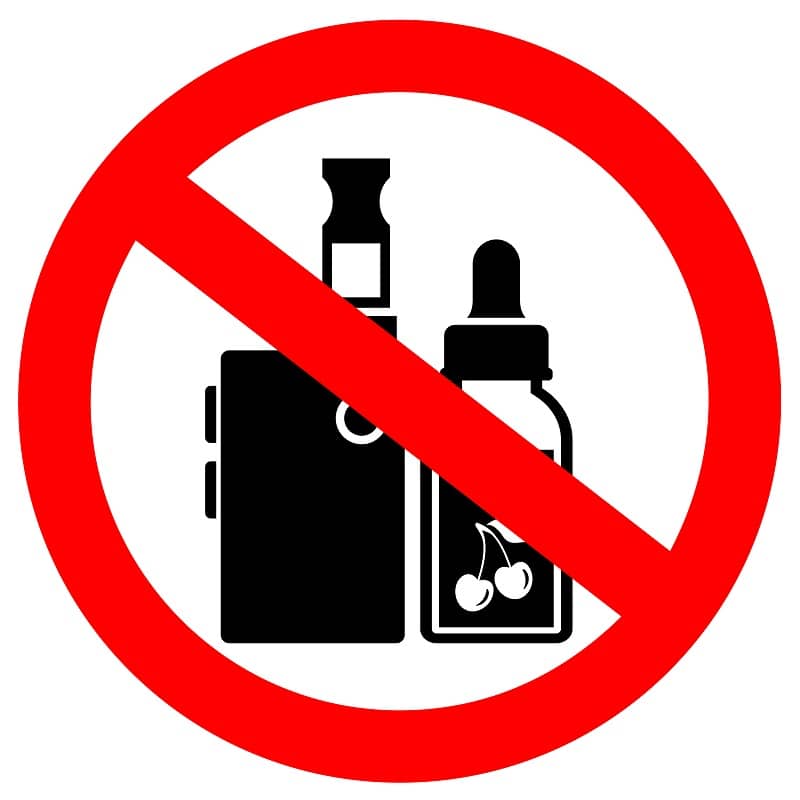Testimony of Cascade Policy Institute
Multnomah County Board of Commissioners
Agenda Item PH.1 Agenda Item R.6
November 28, 2022 December 1, 2022
As policymakers, you surely know that any policy proposal must answer at least three questions:
- What is the problem we are trying to solve?
- Is it really a problem?
- Does our proposed policy do anything to solve the problem?
The proposed ban on flavored nicotine products seeks to solve a problem that does not exist. If passed, the ordinance will do nothing to reduce teen nicotine use while needlessly imposing huge burdens on Multnomah County businesses still struggling to recover from the pandemic and survive the county’s years-long crime and vandalism crisis.
Multnomah County has a teen drug and alcohol crisis, not a tobacco problem
The most recent Oregon Health Authority Student Health Survey reports among Multnomah County 11th graders, since 2015:[1]
- Vaping product use has declined by 7.8 percentage points, with only 8.2% of teens using vaping products in the past 30 days in 2020; and
- Cigarette use has declined by 2.8%, with only 4.2% of teens using cigarettes in the past 30 days in 2020;
In contrast, Multnomah County teens are more than twice as likely to drink alcohol and/or use marijuana than they are to use vaping products. Moreover, teens who use alcohol or marijuana use these substances an average of two out of every three days. This is despite strict laws—and enforcement of those laws—restricting the distribution and sale of alcohol and marijuana.

While not explicitly stated, the text of the proposed ordinance suggests one of the problems to be solved is the retail sale of nicotine-containing products to persons under the age of 21. Nevertheless, the ordinance would ban the sale of flavored products to anyone—including adults over the age of 21.
A ban on flavored products will not reduce teen tobacco use,
and may increase combustible cigarette use
Research on San Francisco’s ban on flavored products found increases in purchases from the Internet or through the mail increased after the ban, as well as increased purchases from retailers outside of San Francisco.[2]
Multnomah County’s ordinance will do nothing to meaningfully reduce teen use of nicotine products in the county. In fact, research published last year by the American Medical Association suggests that a local ban on flavored products led to increased smoking of combustible products among high school students:
San Francisco’s ban on flavored tobacco product sales was associated with increased smoking among minor high school students relative to other school districts. … This raises concerns that reducing access to flavored electronic nicotine delivery systems may motivate youths who would otherwise vape to substitute smoking.[3]
A comprehensive review of the academic research concludes, “published evaluation studies of US flavored and menthol sales policies had not yet provided unequivocal evidence of effects on ultimate intended outcomes of these policies (e.g., reduction in tobacco use prevalence among youth).”[4]
In the end, the proposed ordinance will do nothing to reduce teen nicotine use, while imposing incredible financial burdens on struggling businesses that are currently selling a legal product to legal purchasers. They will be deprived not only of the revenues from the sale of tobacco and vapor products, but also be deprived of the revenues from ancillary sales on drinks, snacks, and prepared food. Is the moral panic over teen nicotine use worth the price of shuttering small businesses?
I urge you to oppose the ordinance banning the sale of flavored nicotine products.
Respectfully submitted by:
Eric Fruits, Ph.D.
Vice President of Research
Cascade Policy Institute
eric@cascadepolicy.org
[1] Oregon Health Authority, Student Health Survey, https://www.oregon.gov/oha/PH/BIRTHDEATHCERTIFICATES/SURVEYS/Pages/student-health-survey.aspx.
[2] Yong, Y., E. N. Lindblom, R. G. Salloum, and K. D. Ward, “The impact of a comprehensive tobacco product flavor ban in San Francisco among young adults,” Addictive Behavior Reports, June 2020, 11:100273, https://www.sciencedirect.com/science/article/pii/S2352853220300134.
[3] Friedman, A.S., “A difference-in-differences analysis of youth smoking and a ban on sales of flavored tobacco products in San Francisco, California,” JAMA Pediatrics, May 2021, 175(8):863–865, https://jamanetwork.com/journals/jamapediatrics/fullarticle/2780248.
[4] Rogers, T., E. M. Brown, L. Siegel-Reamer, B. Rahman, A. L. Feld, M. Patel, D. Vallone, and B. A. Schillo, “A comprehensive qualitative review of studies evaluating the impact of local US laws restricting the sale of flavored and menthol tobacco products,” Nicotine & Tobacco Research, September 2021, 24:4, 433-443, https://doi.org/10.1093/ntr/ntab188.













william mackenzie
Is the ban on wood-burning fireplaces also going to ban gas fireplaces, essentially banning fireplaces altogether?